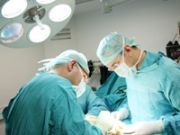Article
Early Report of Success with Minimally Invasive Approach to Rectovaginal Fistula
Author(s):
Researchers have achieved good results in treating rectovaginal fistula through soft tissue augmentation via plastic surgery fat harvesting and subsequent transplantation by injection.

Rectovaginal fistula (RVF), often a complication of injury during vaginal delivery, creates considerable discomfort for patients and rarely heals spontaneously. Surgeons find them challenging, especially since these fistulas are often recurrent and the failure rate increases with each additional surgery. Traditionally, aggressive techniques have been used, but the failure rate remains unacceptably high. Many surgeons and patients would prefer a conservative treatment if it worked well.
Norwegian researchers have published a report in the September 2014 issue of the International Urogynecological Journal that indicates they have had increasing success using plastic surgery fat harvesting and subsequent transplantation by injection, also called soft tissue augmentation.
These researchers believed that soft tissue augmentation might fuel fistula healing in women with recalcitrant RVF since fistulas cause soft tissue loss and scar formation that impedes healing.
They enrolled 6 women with recalcitrant RVF, 4 due to obstetric injury and 2 associated with Crohn’s disease. They injected an average of 75 mL of fat from the lower abdomen transperineally around the fistula tract, and transected the fistula tract transversely.
One patient healed promptly after a sole treatment. The other 5 healed after two treatments spaced 6 weeks apart.
Among 4 patients with RVF associated with obstetric injury, no recurrences occurred during the 41-month follow-up period. Both patients with Crohn’s disease developed new fistulas at about 1 year. One patient had a third treatment, but failed to heal.
Although this study is small, it suggests that fat injection may have greater utility in women with recalcitrant RVF. Since it is considered minimally invasive and does not rely on wide dissection, risk of injury to important neurovascular structures is reduced. The researchers report that if this procedure fails, more aggressive techniques can still be used.




